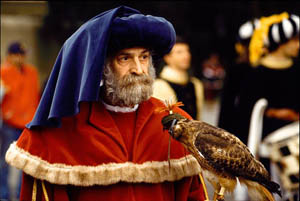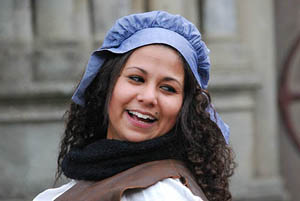Life In A Medieval Castle
|
|
|
||||||||||||||||||
The Commendation Ceremony
A commendation ceremony (commendatio) is a formal ceremony that evolved during the Early Medieval period to create a bond between a lord and his fighting man, called his vassal (Latin vassus). The first recorded ceremony of commendatio was in 7th century France, but the relationship of vassalage was older, and predated even the medieval formulations of a noble class. The lord's "man" ("vassal" comes from a Celtic word for "boy") might be born unfree, but the commendatio freed him. (See Vassal). The purpose of the commendation was to make a chosen person a vassal of a lord. The commendation ceremony is composed of two elements, one to perform the act of homage and the other an oath of fealty. The junior who was to become the vassal of his senior (seigneur) appeared bareheaded and weaponless as a sign of his submission to the will of the lord and knelt before him. The vassal would clasp his hands before him in a sign of submission, and would stretch his clasped hands outward to the lord. The lord in turn grasped the vassal's hands between his own, showing he was the superior in the relationship. The vassal would announce he wished to become his " man", and the lord would announce his acceptance. The act of homage was complete. The physical position for Christian prayer that is thought of as typical today, kneeling, with hands clasped together, originates from the commendation ceremony. Before this time, European Christians prayed in the orans, which is the Latin, or "praying" position that people had used in antiquity: standing, with hands outstretched, a gesture still used today by eastern and some other traditionalist Christians. The vassal would then place his hands on a Bible, or a saint's relic, and swear he would never injure the lord in any way and to remain faithful. An example of an oath of fealty: "I promise on my faith that I will in the future be faithful to the lord, never cause him harm and will observe my homage to him completely against all persons in good faith and without deceit." Once the vassal had sworn the oath of fealty, the lord and vassal had a feudal relationship. |
|
|||||||||||||||||
|
|
||||||||||||||||||
|
|
More on Life in a Medieval Castle
Introduction to Life in a Medieval Castle
Officers & Servants in a Medieval Castle
Mills: Windmills and Water Mills
|
|
||||||||||||||||
|
|
|
|
||||||||||||||||
|
|
|||||||||
| :::: Link to us :::: Castle and Manor Houses Resources ::: © C&MH 2010-2014 ::: contact@castlesandmanorhouses.com ::: Advertising ::: |





